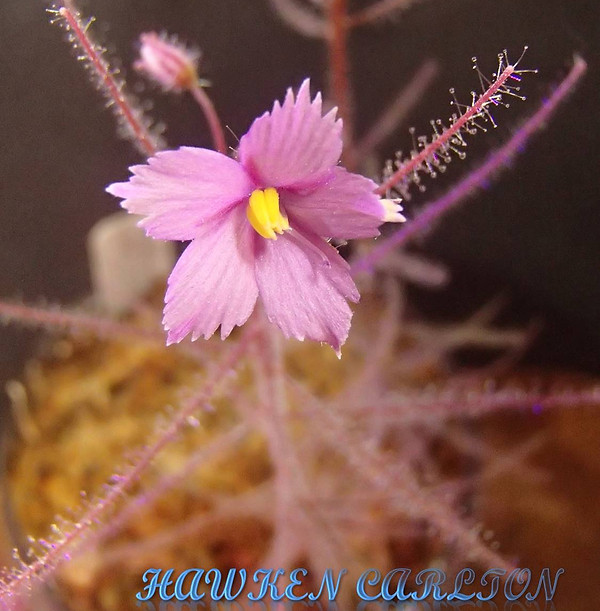
Byblis rorida

B. rorida "Taylor's Lagoon"
Range: northwestern Australia from Broome and Wyndham inland to Tanami
Another of the Kimberleys endemics, this species is found on sandy soils in a range of habitats from savannah woodland to flooded fields and laterite over sandstone outcrops. A fair-sized species, it can max out at around 30 cm high, with an erect to somewhat scrambling stem and filiform leaves up to 5 cm long growing relatively sparsely along its length compared to some other species. Coloration is green to easily flushing shades of red under strong lighting. Flower arise singularly on long stalks between the leaf axils, with many stalks able to be produced at any one time on a healthy plant. Blooms reach up to 2 cm across (though averaging smaller), with ovular to slightly obovate pinkish to deep violet petals bearing distinct and deeply serrated outer edges. This species differs from others by having a distinct set of sessile glands across the leaf and stem surfaces alongside the typical stalked glands as well as the unique serration of the petals.
Cultivation: grow in a median pot with a 3:2 sand/peat soil mix, kept moist (preferably not wet) and moderately humid with warm to hot temperatures year round. Sow seeds on soil surface after treating with smoke water or 500 ppm GA3 for 24 hours, and grow in strong artificial light to full sun. Feed regularly for best health and blooming.
Lifespan and reproduction: Annual. Reproduces via seeds (requires cross-pollination of 2 different clones), and may possibly be propagable via stem cuttings.

B. rorida "Taylor's Lagoon" flower